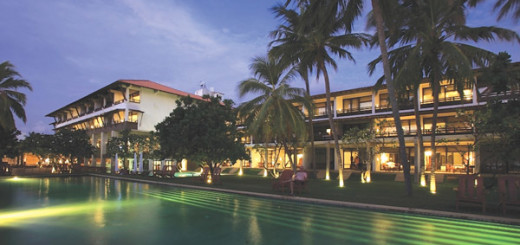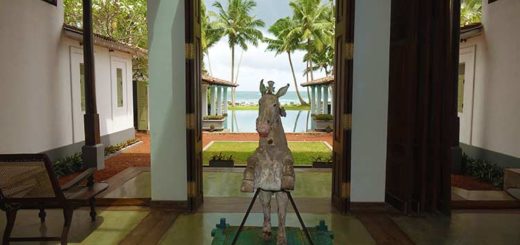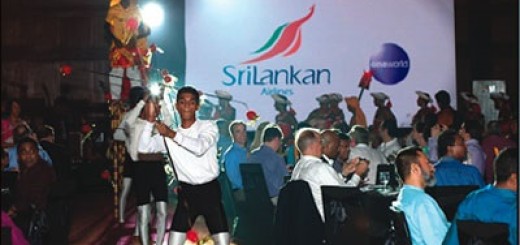Sri Lanka’s West Coast – In a Day!
by Jetwing ·
Are you anticipating a holiday in the near future?
Do you feel like you desperately need to ‘get out’ of Colombo, even for the day? During the next few weeks, I will take you on a trip. Let’s get away together, to a few cities in our beautiful island paradise that you can visit and enjoy in a day. Rest assured, by the end of this ride, all your holidays will be fully booked!

On our first adventure, let’s head north from Colombo, approximately 37km, to the small fishing village of Negombo (mígamuva). Located just 7km from the Bandaranaike International Airport, Negombo is famous for its golden beaches, making it a tourist hotspot. Negombo’s economy is based primarily on tourism and its fishing industry, in addition to producing cinnamon, ceramics and brass wear.
The highlight of Negombo for me, however, is the authentic, sea-side Italian coffee house that is a popular hangout among the local expatriates and foreign guests. Appropriately named ‘The Sweet Life’ in Italian, the Dolce Vita is a coffee house-cum-restaurant managed by a friendly Italian couple who have made Sri Lanka, and Negombo, their home. It is located in the premises of the Sea Sands rest house (where one could rent rooms for a nominal fee), and it is not visible from beach road, which is the reason behind its serenity.
The Dolce Vita offers enticing edibles, from Italian coffee – straight from Italian coffee beans! – to authentic pizza, but what captured my attention the most was the home-made ice cream.
Walking along the Negombo shore, one can see the surroundings in five colourful states – golden sand, green grass, black jagged rocks, dark blue crystal water, and the light blue sky.

Towards evening, locals gather to a nearby cove to swim and take their children to the amusement park just on the shore; and don’t worry about being left hungry, as carts full of isso wadé and other such ‘bites’ adorn the beach.
However, like clockwork, at around half past six, be sure to watch as the bright orange sun slowly sinks into the glossy blue ocean.
Negombo at night is also busy, with locals and visitors walking the streets, which are lit up with restaurants, bars and shops etc. Like most hangouts in Negombo, our waterhole, Rodeo, is a restaurant-cum-bar with its own unique attraction – the walls are covered with graffiti, autographs of all the people who had been there, since its inception.
[If anyone happens to visit this place, check out the spot near the top of the main doorway, next to the fan fixed to the wall – that’s us!]
Negombo is also fondly known as ‘Little Rome’, owing to the highly ornate Portuguese-era Roman Catholic churches that are found around town, many of them on the beach itself!

Travelling along the same road, one soon chances upon another fishing village, Marawila. Like Negombo, and influenced by foreign settlers for centuries, this too is a Catholic-oriented community, home to many large churches which are worth a visit.
Fisher-folk mending their nets or boats, preparing to venture out into the ocean is not a rare sight in this area, where it is the livelihood of most locals. Aside from this meagre income from the seas, many are also now employed at small factories springing up along this coast, to provided much-needed employment to the residents.
Marawila also boasts of sandy beaches, where many indulge in sun worshipping and various beach games. So be sure to pack your sunblock!
It is perhaps these beaches that have convinced many hoteliers to adopt this location to put up some of the most popular luxury hotels in Sri Lanka, such as the Club Palm Bay Hotel This locality provides the ideal option for tourists who wish to stay away from the hustle and bustle of Colombo, and the (at times) overcrowded streets of Negombo.
The rural vicinity of Marawila, a dense jungle area, provides the ideal nature reserve/bird sanctuary for the many rare species of migrant birds it attracts, making it a bird watcher’s paradise. This ecologically rich environment is another reason for the village’s rising popularity among tourists.

Further along the A3 highway is the seaside town of Chilaw. Located 50km north of Colombo, Chilaw consists of two distinct areas, the ‘mainland’ and the coastal strip, which are separated by the lagoon.
According to its residents, Chilaw is an ‘admirable city where people of varied backgrounds, religions and ethnicities live together in peace and harmony’.
Chilaw is also known as the ‘pearl of the North-West coastal belt’, as it was famous for its pearl fisheries, which were once the highest precious pearls in the world.
Owing to its rich lagoon area, Chilaw is ideal for farming prawns. Driving along the main road, one can see these ‘prawn farms’ on either side of the road.
A must-visit landmark in Chilaw is the Munneshwaram Kovil, one of the five ancient temples dedicated to Shiva. The complex is a collection of five temples, including a Buddhist temple, with the biggest and most prestigious central temple being popular among Hindus; it is, however, visited annually by Hindus, Buddhists, Catholics and Muslims alike.
No matter what time of year, there is always a beach with sunshine and calm seas in Sri Lanka – a beach for all tastes, budgets and seasons.
With beach life being the main attraction in this locality, next week I venture inland from Colombo to townships such as Avissawella and Pinnawala.
Courtesy of ![]()




